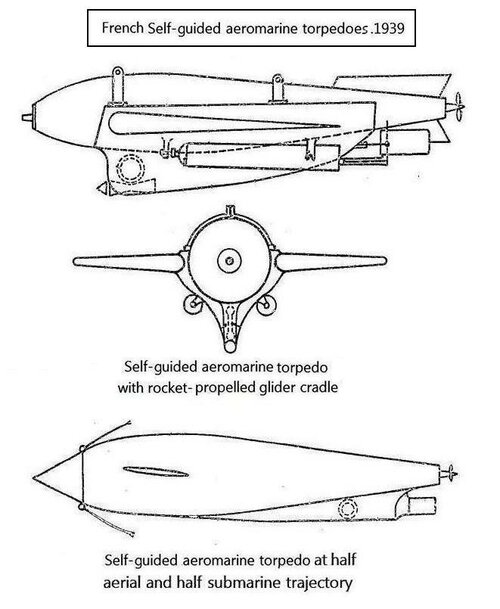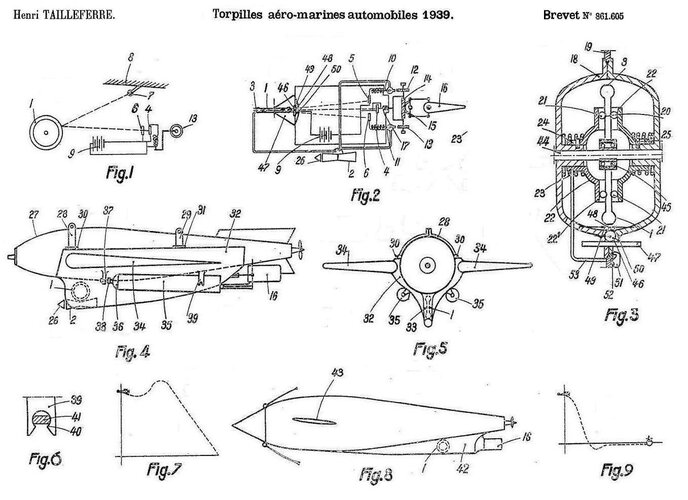klem
I really should change my personal text
- Joined
- 7 March 2015
- Messages
- 701
- Reaction score
- 1,515
Henri Tailleferre's patent applies to air-launched projectiles in general. These improvements consist essentially in the perfection of the launching process of self-guided aerial torpedoes, thus the necessity of a device to maintain a good direction of the projectile, by a guiding tool (such as gyroscope, compass, or equivalent), having a position determined by the original direction, of the photocells; a light emitting source, a reflecting element interposed between the photocells and their light source, means acting on a rudder to re-establish the original direction; and organs with operation triggered by the photocells to ensure the activation of said means. The aerial torpedo represented in figs. 4 and 5 is a self-guided torpedo, placed on a removable support, called a glider cradle of aerodynamic shape with a rocket on each side, the fins are an integral part of the cradle serving to straighten its trajectory and give the torpedo an altitude higher than that of the launch. In the keel, is housed a device ensuring the direction and the stabilization of trajectory at the moment when it enters the water also guaranteeing an increase in its range. After the release of the torpedo and the ignition of the rockets (which will be thereafter automatically released by an adequate device in order to lighten the glider cradle) with a certain delay the plane can operate a change of direction. Then the whole of the device (glider cradle and torpedo) continues its descent in glided flight.
As for the torpedo represented (fig. 8), with a half aerial and half submarine trajectory (fig. 9), it is a self-guided torpedo, equipped with a device of maintenance of direction and stabilization of trajectory, it is provided with ailerons being used for the rectification of its trajectory, at the moment when it enters water. A gyroscopic device is incorporated in the keel, which is used to maintain the course and an equipment for the stabilization of the route, which can also be controlled by a hydrostat, its advancement in the water is carried out by its force of penetration to which is added the propulsion of the engine.
As for the torpedo represented (fig. 8), with a half aerial and half submarine trajectory (fig. 9), it is a self-guided torpedo, equipped with a device of maintenance of direction and stabilization of trajectory, it is provided with ailerons being used for the rectification of its trajectory, at the moment when it enters water. A gyroscopic device is incorporated in the keel, which is used to maintain the course and an equipment for the stabilization of the route, which can also be controlled by a hydrostat, its advancement in the water is carried out by its force of penetration to which is added the propulsion of the engine.


